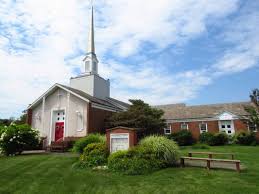When a church seeks funding to enhance its mission, whether for expansion, repairs, or other essential projects, understanding the different types of church loans available can make a significant difference. Selecting the right financing for your church can ease the financial burden and help you achieve long-term stability. However, not all church loans are the same, and each option comes with its unique benefits, challenges, and eligibility requirements. Let’s explore the various types of church loans, how they differ, and how to choose the best one for your church.
1. Traditional Bank Loans
Traditional bank loans are often the first type of financing that comes to mind when churches seek funding. These loans are typically issued by large financial institutions and can provide substantial amounts of capital. However, the approval process can be rigorous. Banks generally require strong financial records, including consistent cash flow, a proven ability to repay the loan, and a solid credit history.
For churches with strong financial standing and clear growth potential, a traditional bank loan might be an ideal choice. It can offer competitive interest rates and longer repayment terms, which can help spread out the financial commitment. However, due to the stringent eligibility criteria, many churches may find this option less accessible.
2. Church-Specific Loans
Church-specific loans are designed explicitly for religious organizations, addressing their unique needs. These loans are offered by lenders that specialize in financing for churches, often offering more favorable terms than traditional bank loans. They are available for various purposes, such as building, renovations, debt consolidation, or purchasing land.
The approval process for church-specific loans is generally more lenient than for traditional bank loans, making them more accessible to churches with limited financial histories or lower credit scores. Lenders offering church-specific loans may be more understanding of the church’s non-profit status and its seasonal revenue fluctuations, often providing more flexible repayment plans.
3. SBA Loans for Churches
The Small Business Administration (SBA) offers loans that can be used by certain types of non-profit organizations, including churches. SBA loans are known for their low-interest rates and long repayment terms, making them attractive options for churches in need of financing. These loans come in two main types: the SBA 7(a) loan and the SBA 504 loan.
The SBA 7(a) loan is a general-purpose loan that can be used for working capital, purchasing equipment, or other necessary expenses. The SBA 504 loan, on the other hand, is typically used for large capital projects such as purchasing real estate or building improvements. SBA loans have less stringent requirements than traditional bank loans, making them a great option for churches with limited financial history.
4. Non-Profit Loans
While not specifically designed for churches, non-profit loans can also be an excellent option for religious organizations. These loans are available to a wide range of non-profits and can be used for many purposes, including operational costs, growth initiatives, and facility improvements.
Non-profit loans are generally more accessible than traditional bank loans. Lenders tend to consider the mission and community impact of the organization when evaluating loan applications. However, interest rates and repayment terms can vary based on the lender, so it’s essential to shop around for the best deal.
5. Secured Church Loans
A secured church loan requires the church to provide collateral, such as property or other assets, in exchange for the loan. This can be a viable option for churches that own significant property or valuable assets. Secured loans tend to have lower interest rates and higher borrowing limits since the lender has something to fall back on in case of default.
However, the downside of a secured loan is the risk of losing the collateral if the church fails to repay the loan. Churches must carefully assess their ability to make timely payments before considering a secured loan.
6. Unsecured Church Loans
Unsecured church loans do not require collateral, which can be appealing to churches that do not want to risk their property. These loans typically have higher interest rates than secured loans due to the increased risk to the lender.
Unsecured loans are more difficult to obtain because lenders have no physical asset to protect their investment. However, they may be a suitable option for churches that need a smaller loan amount or do not have significant assets to offer as collateral.
7. Construction Loans
Construction loans are designed specifically for churches looking to build or renovate their facilities. These loans provide short-term financing to cover construction costs, with the expectation that the church will pay off the loan once the project is complete. The terms of construction loans can vary depending on the scope of the project and the lender.
Construction loans are typically interest-only during the construction phase, making monthly payments more manageable. However, once the project is completed, the church will need to transition to a longer-term loan to pay off the remaining balance.
8. Bridge Loans
Bridge loans are short-term loans designed to “bridge” the gap between when a church needs financing and when they can secure a more permanent solution. Churches may use bridge loans to cover expenses during times of transition, such as before receiving a large donation or securing long-term financing.
Bridge loans tend to have higher interest rates, as they are temporary and carry more risk for lenders. However, they can be a helpful solution for churches that need quick access to funds.
Choosing the Right Loan for Your Church
When selecting a loan, churches should carefully assess their financial situation, project scope, and ability to repay. It’s important to compare the loan terms, interest rates, and repayment options of various lenders. Churches should also consider the long-term impact of the loan on their mission and financial health.
It’s also essential to work with financial advisors or consultants who understand the unique challenges churches face. They can help navigate the complex world of church financing and ensure that the loan chosen aligns with the church’s mission and goals.
